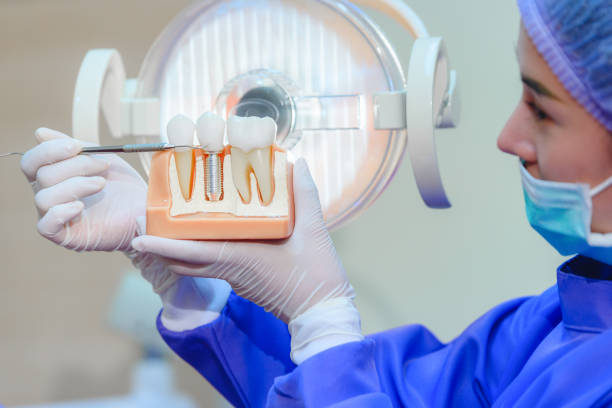
Introduction
Dental Implants in Abu Dhabi have revolutionized modern dentistry, providing a durable and effective solution for replacing missing teeth. But what exactly is the science behind dental implants, and how do they work? In this guide, we’ll delve into the fascinating science behind dental implants, exploring the materials used, the biological processes involved, and the principles that make them such a successful tooth replacement option.
Anatomy of a Dental Implant
A dental implant is composed of three main components:
-
Implant Fixture: This is a small, screw-like titanium post that is surgically placed into the jawbone. It serves as the artificial tooth root and provides a stable foundation for the replacement tooth.
-
Abutment: The abutment is a connector piece that attaches to the implant fixture and protrudes above the gum line. It provides support for the prosthetic tooth or teeth.
-
Prosthetic Tooth: This is the visible part of the dental implant, often a crown, bridge, or denture, which is custom-made to match the color, shape, and size of natural teeth.
The Science Behind Osseointegration
One of the key factors contributing to the success of dental implants is a process called osseointegration. After the implant fixture is placed into the jawbone, the surrounding bone tissue gradually fuses with the titanium surface of the implant. This integration process is essential for ensuring the stability and longevity of the implant.
The success of osseointegration depends on several factors, including the biocompatibility of the implant material, the surgical technique used, and the quality and quantity of the jawbone. Titanium is chosen for dental implants because of its exceptional biocompatibility and ability to integrate seamlessly with bone tissue.
The Role of Bone Remodeling
Bone remodeling is another crucial aspect of the science behind dental implants. Once the implant fixture is integrated into the jawbone, the surrounding bone tissue undergoes a process of continuous remodeling. This process involves the removal of old bone tissue and the formation of new bone tissue, which helps maintain the stability and strength of the implant over time.
Implant Design and Surface Modifications
Advancements in implant design and surface modifications have significantly contributed to the success rate of dental implants. Innovations such as roughened implant surfaces and specialized coatings enhance the implant’s ability to integrate with the surrounding bone tissue and promote osseointegration.
Conclusion
The science behind dental implants is a fascinating blend of materials science, biomechanics, and biology. By understanding the principles behind osseointegration, bone remodeling, and implant design, researchers and dental professionals continue to refine and improve the effectiveness of dental implants, offering patients a reliable and long-lasting solution for replacing missing teeth.


